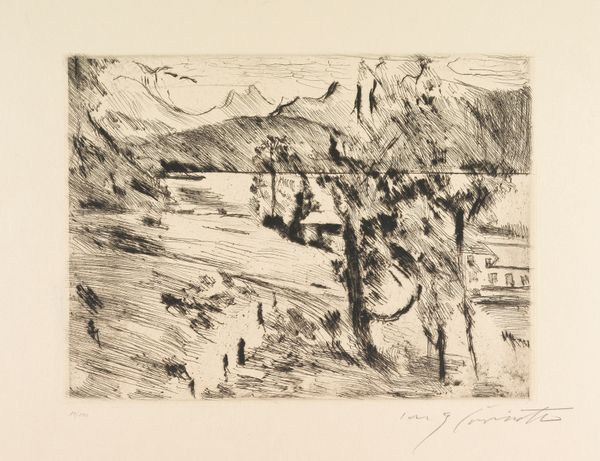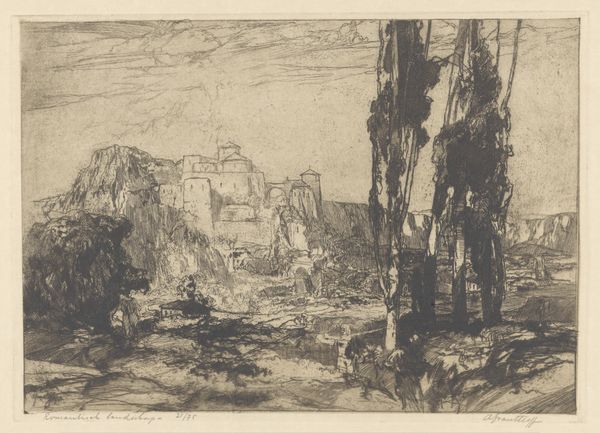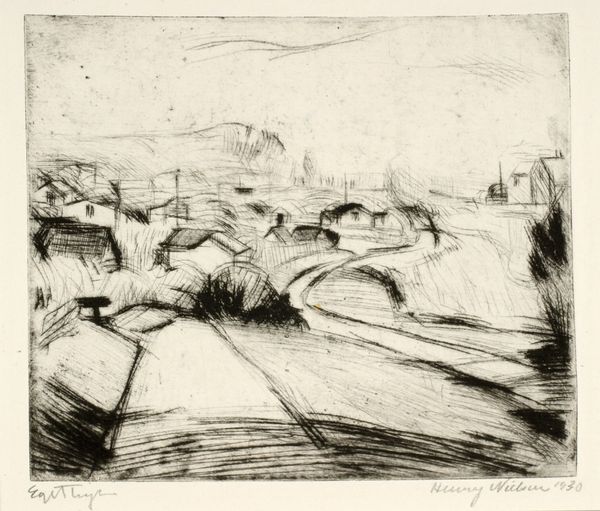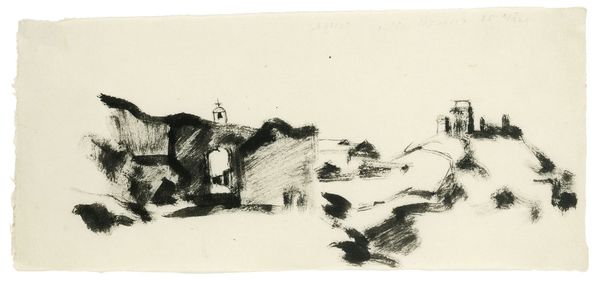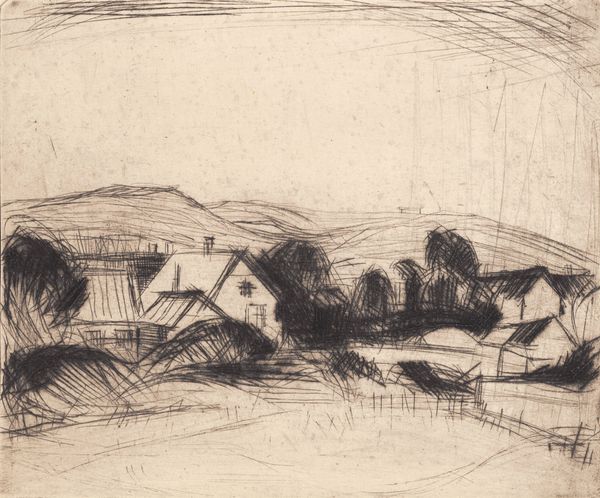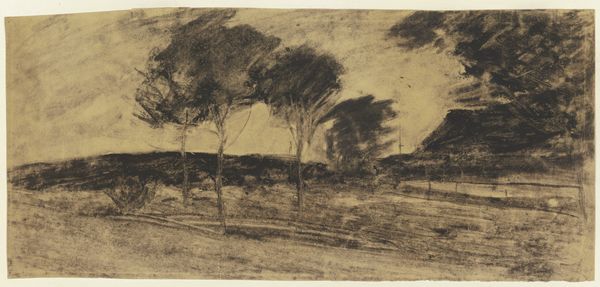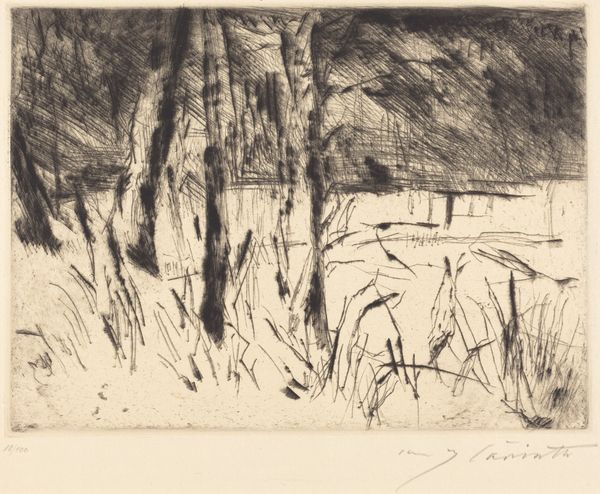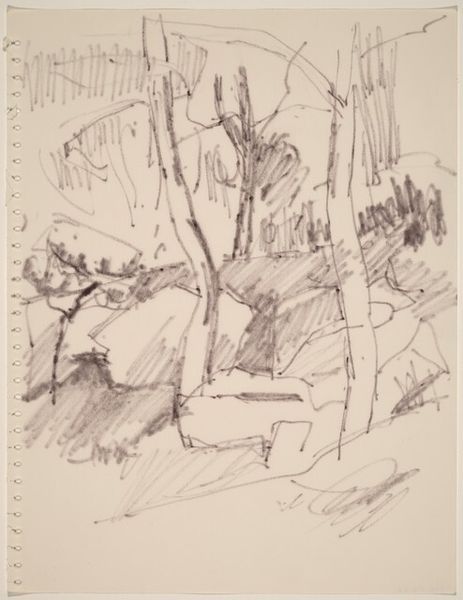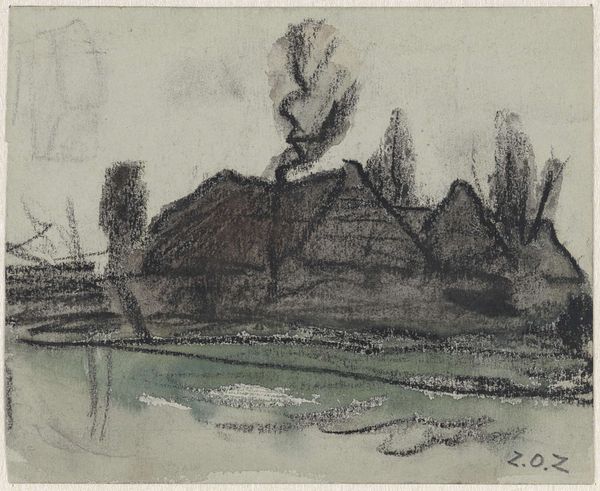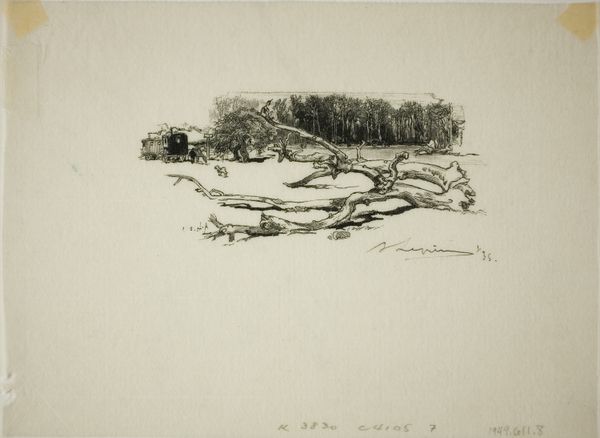
drawing, paper, ink, indian-ink
#
17_20th-century
#
landscape illustration sketch
#
drawing
#
amateur sketch
#
pen sketch
#
pencil sketch
#
landscape
#
paper
#
personal sketchbook
#
ink
#
german
#
ink drawing experimentation
#
indian-ink
#
pen-ink sketch
#
watercolour illustration
#
pencil art
#
watercolor
Copyright: Public Domain
Here is the audio guide script for Saint-Guilhem-le-Désert by Hermann Lismann. The artwork is rendered in monochrome wash, with a focus on stark contrasts and the interplay between light and shadow, immediately evoking a sense of starkness. Lismann uses bold brushstrokes to define the rugged landscape, and the dramatic shadows emphasize the scene's underlying geometry. This formal rendering resonates with the early 20th-century artistic movements that sought to distill nature into its essential forms. Here, Lismann uses a semiotic language of art, where simplified shapes and stark contrasts speak to the deeper structural elements of the landscape. We can see the cultural codes that represent the sublime in nature—the stark cliffs, the sparse vegetation—are all rendered with a modernist sensibility. Note how the artist destabilizes our traditional understanding of landscape art. Lismann focuses less on the picturesque details and more on the elemental forms. It is through these formal qualities that the artwork engages with broader philosophical notions about nature and our perception of it.
Comments
No comments
Be the first to comment and join the conversation on the ultimate creative platform.
